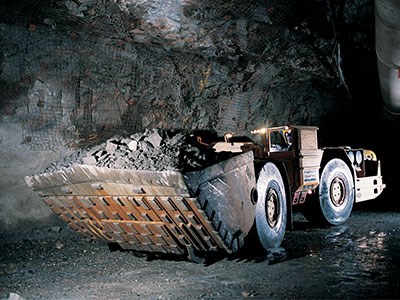Sudbury’s Centre for Excellence in Mining Innovation (CEMI) plans to launch a Canada-wide request for proposals by late September for projects that would fall under its $46-million Ultra Deep Mining Network.
Last January, CEMI received a $15 million grant from the federal government's Business-led Networks of Centres of Excellence program to pursue research to make ultra-deep mining – deeper than 2.5 kilometres or roughly 8,000 feet – more efficient and productive.
As mines go deeper underground, technologies and processes that can improve costs and efficiencies can mean the difference between a profitable operation and one that goes out of business.
Vale intends to reach three kilometres in depth, or nearly 10,000 feet, at its flagship Creighton Mine in Sudbury within the next decade.
Creighton is undergoing a third phase of expansion, which includes extending its primary access ramp from 7,940 to 8,200 level, and the creation of three main production levels to access additional ore bodies.
Ottawa’s funding for the network was on top of $17 million in private contributions received from industry and $14 million worth of in-kind contributions to access mining facilities and use equipment for research and testing.
“When we made the submission we had an initial group of supporters who had projects they wanted to work on,” said Douglas Morrison, CEMI's president and CEO.
Those initial stakeholders have already submitted projects in four key areas that impact ultra-deep mining: rock stress reduction; energy reduction; material transport and productivity; and improving human health for underground workers.
The request for proposals will open up roughly 75 per cent of the available funding to university researchers and mining companies across Canada.
Advances in underground ventilation could arguably have the greatest impact on the profitability of ultra-deep mines, Morrison said.
“The ventilation cost is the single largest cost for any underground mine,” he said. “And to make that single cost larger has a very large impact on the overall viability of the mine.”
Mines are typically cooled through a natural heat exchange system – where air is cooled down at surface and pumped underground.
Because the air heats up as it is pumped deeper underground – the system is no longer effective beyond a 2.5-kilometre cutoff point.
At that depth and beyond, mines are forced to introduce expensive systems to cool the air.
CEMI-funded researchers have started to take cues from the past to develop more efficient systems for cooling.
“We're actually going back in time, and we're beginning to look at techniques that were used way back in the 1900s, before there was grid power and before there was ready access to fossil fuels,” Morrison said.
The ragged chute system, developed in Cobalt at the turn of the 20th century, used a small waterfall to produce compressed air that supplied oxygen underground. Combining these proven systems with new technologies could lead to advancements in ventilation.
The advance rate in material transportation and productivity underground is another key component of the network.
Underground drifts are currently expanded at a rate of around 3.5 metres per day, Morrison said, “much slower than it used to be in the past.”
CEMI wants to boost that expansion rate to nine or 12 metres per day.
Ore tunnels are not built as quickly as they once were due to higher safety standards and the need for more ground support. Rock conditions become poorer as mines go deeper underground, which complicates drift expansion.
Research to change the sequence of activities involved in mining – to better adapt to specific conditions – is expected to make the process more efficient, Morrison said.
The deeper a mine, the greater the physical stress on the surrounding rock.
New techniques to support tunnels will help make mines safer and more productive as they go deeper.
The final research component concerns the physical toll mining takes on workers - where a large number are over the age of 50 - and in finding ways keep them healthy. It means monitoring miners’ vital signs and determining their alertness and fatigue levels at extreme depths, where the margin for error shrinks.
The mining companies and Sudbury's supply and services sector, will have big stakes in this research, Morrison.
“We can't actually come up with a successful program unless they (mining companies) are involved in what we do,” he said.




